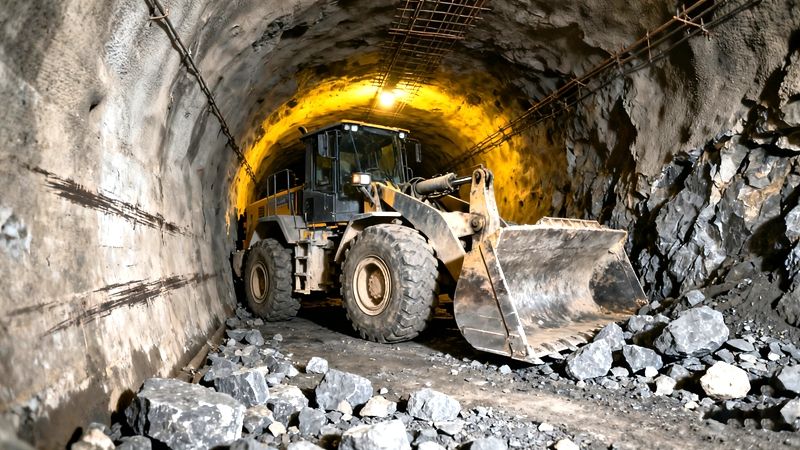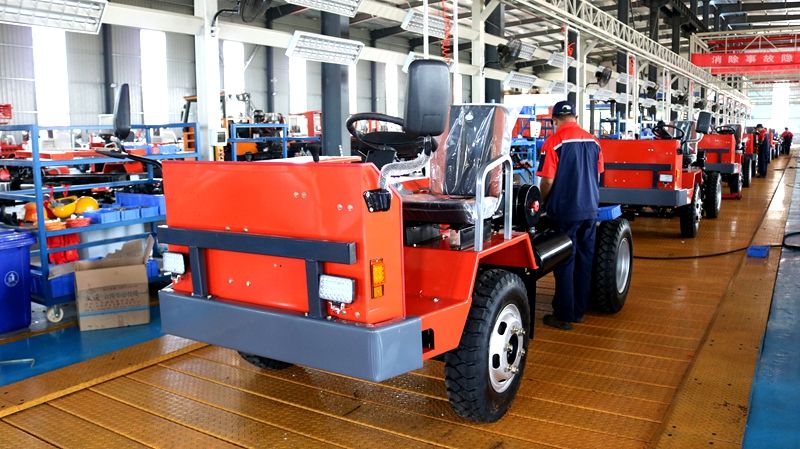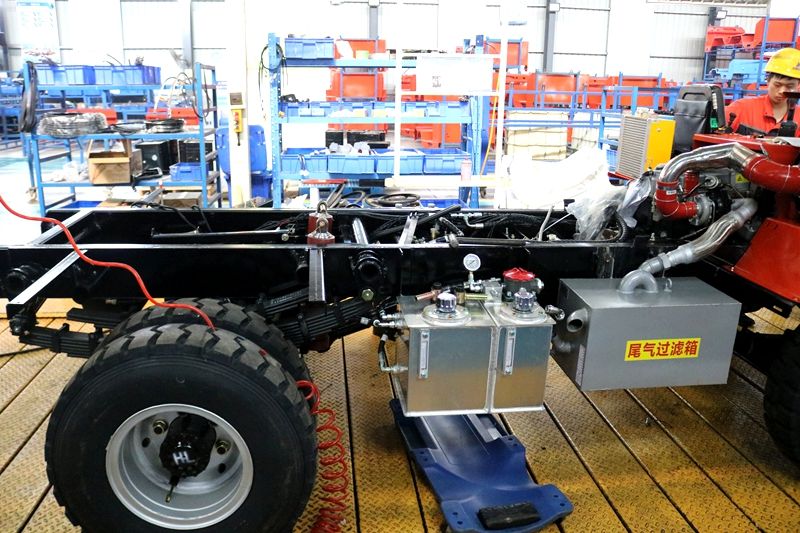Underground Hard Rock Mining Technology Upgrades: Driving the Popularity of Underground Mining Equipment for Sale and Mining Machinery Innovation
1.1 Why Small and Medium-Sized Hard Rock Mines Are Rushing to Update Practical Basic Equipment
For small and medium-sized underground hard rock mines in Idaho’s Silver Valley and Chile’s Atacama Region, equipment durability matters far more than complex functions. These mines account for 60% of the world’s hard rock output, operating in 2-meter-wide granite tunnels where ore impact and friction cause severe wear to equipment frames and buckets. In the past, outdated equipment frequently shut down due to frame deformation and bucket damage. Meanwhile, equipment with complex technologies was not only costly to purchase but also relied on professional personnel for maintenance, making it completely unsuitable for the actual needs of small and medium-sized mines. Therefore, underground mining equipment equipped with cold-riveted frames and integral manganese steel components has become a market favorite due to its durability and easy maintenance. Mining machinery innovation centered on these basic technologies has also become a key factor for small and medium-sized mines to improve efficiency.
1.2 Three Core Basic Technology Upgrades Adapting to Hard Rock Mining
The first core upgrade is the combined application of low-alloy high-strength wear-resistant steel bucket bodies and high manganese steel bucket teeth. In underground hard rock mining, the bucket body endures continuous friction, while the bucket teeth directly withstand intense ore impact, making it difficult for a single material to meet both requirements. Currently, the bucket bodies of mainstream underground mining equipment are made of NM360 low-alloy high-strength wear-resistant steel, and the bucket teeth are made of Mn13 high manganese steel. Some mines also add extra high manganese steel reinforcing strips along the edges of the bucket bodies. A small gold mine in Nevada replaced its old ordinary steel bucket with this combined configuration. As a result, the overall replacement cycle of the bucket extended from 3 months to 9 months, with the high manganese steel bucket teeth only needing to be replaced individually every 6 months, saving $35,000 in replacement costs annually. This precise material matching based on performance characteristics is the core direction of current mining machinery innovation, effectively solving the wear problem in hard rock mining.
Second is the comprehensive application of integral ordinary manganese steel frames paired with cold-riveting technology. Traditional welded frames were prone to weld cracking during bumpy operations in hard rock mines. Once the frame was damaged, the entire equipment was almost rendered useless. In contrast, the integral frames of new underground mining equipment are made of ordinary manganese steel with an 8% manganese content, and key joints are fixed using cold-riveting technology. This not only ensures structural strength but also reduces smelting costs. A hard rock mine in Broken Hill, Australia, reported that loaders adopting this structure operated continuously for 18 months without frame deformation or loosening. Compared with old welded frames, the maintenance frequency was reduced by 60%. This upgraded combination of craftsmanship and basic materials requires no complex technologies but directly extends equipment service life.
The third upgrade is the installation of low-alloy high-strength wear-resistant steel transmission guards. Scattered rocks in underground hard rock mining are likely to damage equipment transmission components, so the guards must balance wear resistance and impact resistance. Current mining machinery innovation mostly involves installing NM400 low-alloy high-strength wear-resistant steel guards on key components. These guards connect tightly with ordinary manganese steel cold-riveted frames to form a complete protective structure. After a nickel mine in Sudbury, Canada, installed these guards on its loaders, the damage rate of transmission components dropped by 75%. This completely solved the sudden shutdown problem caused by rock impact, enabling the equipment to adapt to continuous high-intensity operations.
1.3 How Basic Technologies Drive the Popularity of Underground Mining Equipment for Sale
Data from equipment dealers in hard rock mining clusters shows that sales of equipment equipped with cold-riveted frames and manganese steel series components have increased by 30% year-on-year. Small and medium-sized mines prefer such equipment mainly due to its cost-effectiveness and easy maintenance. A dealer in Colorado, USA, stated that all 10 loaders sold last quarter adopted integral ordinary manganese steel frames, NM360 low-alloy bucket bodies, and Mn13 high manganese steel bucket teeth. Mine buyers generally reported that when equipment broke down, local maintenance workers could replace worn high manganese steel bucket teeth or reinforce cold-riveted joints. There was no need to wait for professional teams from manufacturers, which significantly reduced downtime.
Mining machinery innovation also involves targeted basic improvements based on the tunnel characteristics of different mines. For example, for 1.8-meter-wide narrow tunnels, manufacturers have optimized the weight of integral ordinary manganese steel frames while retaining cold-riveting technology. The buckets are made of thinner NM300 low-alloy high-strength wear-resistant steel. The small loaders launched have gained great popularity in Southeast Asian hard rock mines. Such targeted adjustments based on basic materials allow underground mining equipment for sale to adapt to more working conditions, further expanding market demand.
1.4 Key Factors for Small and Medium-Sized Mines to Easily Adapt to New Equipment
The greatest advantage of underground mining equipment equipped with cold-riveted frames and manganese steel series components lies in its low threshold for operation and maintenance. Unlike complex intelligent equipment, their core structures are simple and intuitive, and mine workers can master operation skills proficiently after simple training. A survey of 50 small and medium-sized hard rock mines found that 90% of the mines indicated that maintaining new equipment only required replacing worn high manganese steel bucket teeth, low-alloy guards, or reinforcing loose rivets. The consumables are easy to purchase and low-cost.
In addition, the compatibility of the equipment has been optimized. The specifications of low-alloy buckets and ordinary manganese steel frames of new equipment are standardized, enabling partial compatibility with spare parts of existing old equipment in mines. For instance, the Mn13 high manganese steel bucket teeth of new loaders can be adapted to the loading and unloading interfaces of old transport equipment. This allows mines to upgrade equipment in batches instead of replacing the entire fleet, greatly reducing investment costs.
1.5 Practical Development Direction of Mining Machinery Innovation
In the future, mining machinery innovation will continue to focus on the optimization of basic materials. Manufacturers plan to further refine the application scenarios of manganese steel series materials and launch component models suitable for ores of different hardness. For example, equipment used for mining ultra-hard ores such as granite will be equipped with thicker NM450 low-alloy bucket bodies and hardened Mn13 high manganese steel bucket teeth. For iron ore mining, the load-bearing structure of integral ordinary manganese steel frames will be optimized to enhance impact resistance.
Meanwhile, cold-riveting technology will be further simplified. Detachable rivet designs will be introduced for ordinary manganese steel frames, allowing mines to quickly complete frame maintenance on-site. These practical improvements do not rely on high-tech supporting facilities but can effectively enhance the practicality of underground mining equipment for sale, continuously meeting the core needs of small and medium-sized hard rock mines.






